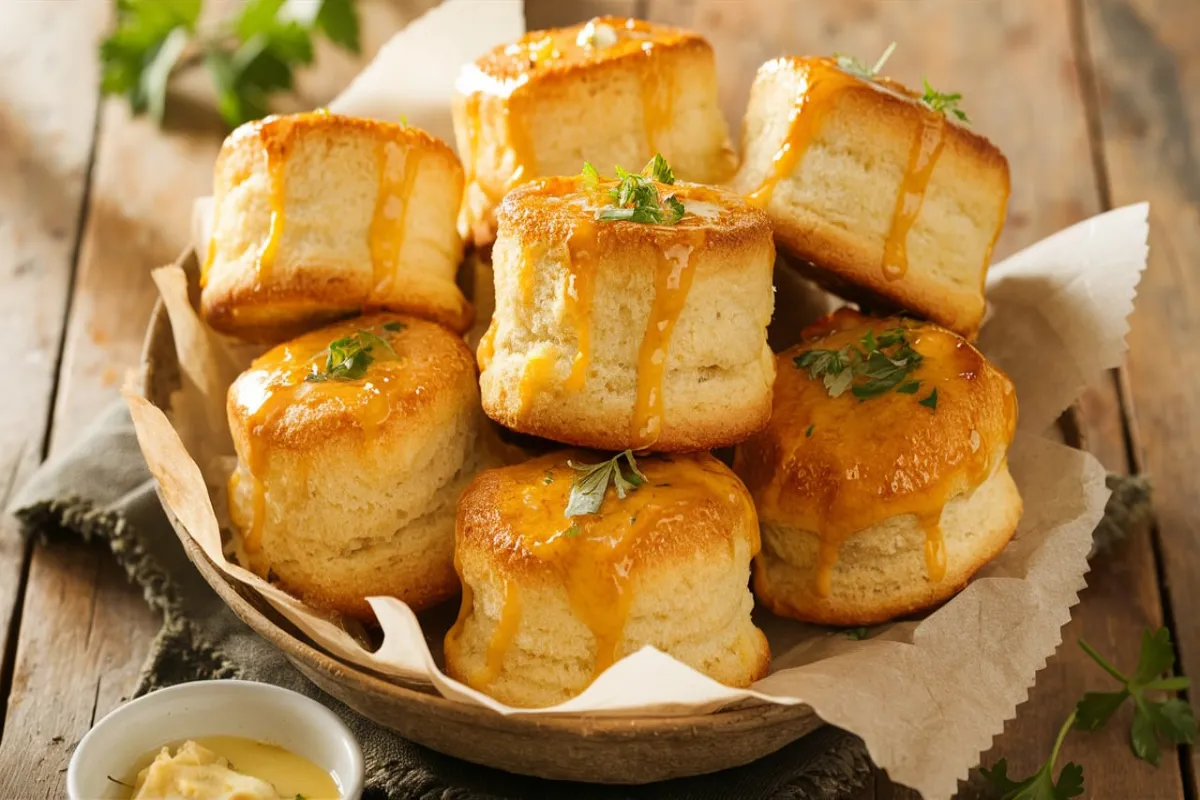Gluten free biscuits are a fantastic option for those who want to enjoy a comforting, classic treat without the gluten. Whether you have celiac disease, a gluten sensitivity, or simply prefer gluten free baking, these biscuits are simple to make and incredibly tasty. With the right ingredients and a few helpful tips, you can create biscuits that are fluffy, flavorful, and suitable for any occasion. In this article, we’ll explore everything you need to know about making gluten free biscuits, from selecting the best ingredients to mastering the baking techniques that yield perfect results every time. Let’s get started!
What Are Gluten Free Biscuits?
Gluten free biscuits are a delicious alternative to traditional biscuits, crafted without wheat flour or other gluten-containing ingredients. Here’s what makes these biscuits unique and why they’re a great choice:
Understanding Gluten Free Baking
Gluten free baking uses ingredients that are free from gluten, a protein found in wheat, barley, and rye. Many people opt for gluten free foods due to celiac disease, gluten sensitivity, or dietary preferences. While baking without gluten can be a challenge because gluten contributes to the structure and texture of baked goods, using the right ingredients and techniques can help you create gluten free biscuits that are just as delightful, if not more so, than their traditional counterparts. For instance, using gluten free flours and substitutes can help mimic the properties of gluten.
Learn more about gluten free ingredients and their uses in our guide on Is Gluten Free Pasta Low Carb?.
Ingredients Commonly Used in Gluten Free Biscuits
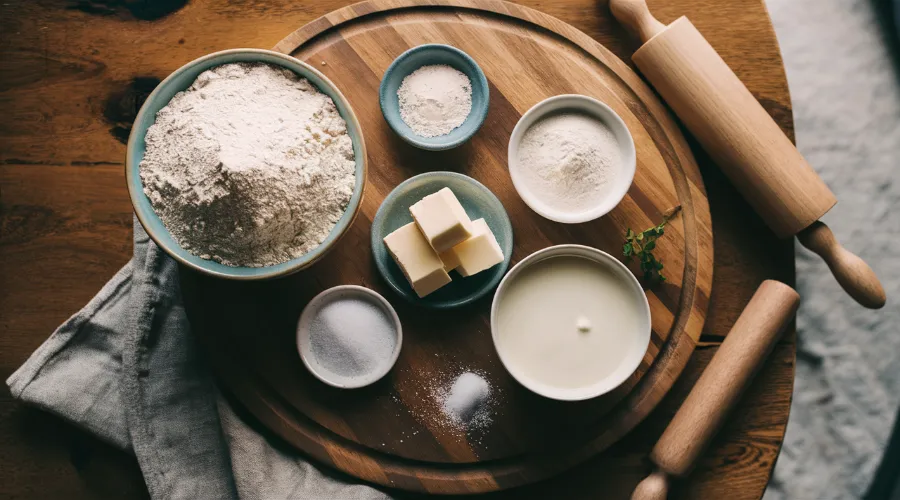
To make gluten free biscuits, specific ingredients are required to replace traditional wheat flour. Common gluten free flours used in biscuit recipes include almond flour, rice flour, and coconut flour. Additionally, a binding agent like xanthan gum or guar gum is often added to replicate the elasticity that gluten provides. Other ingredients such as baking powder, baking soda, butter, and buttermilk are typically used to achieve the right texture and flavor.
Check out our article on How to Make Velveeta Cheese Dip Without Rotel for a perfect snack to pair with your biscuits!
How to Make Gluten Free Biscuits at Home
Making gluten free biscuits at home is easier than you might think! With some basic kitchen tools and a few ingredients, you can quickly whip up a batch of these delicious biscuits. Here’s a detailed guide to get you started:
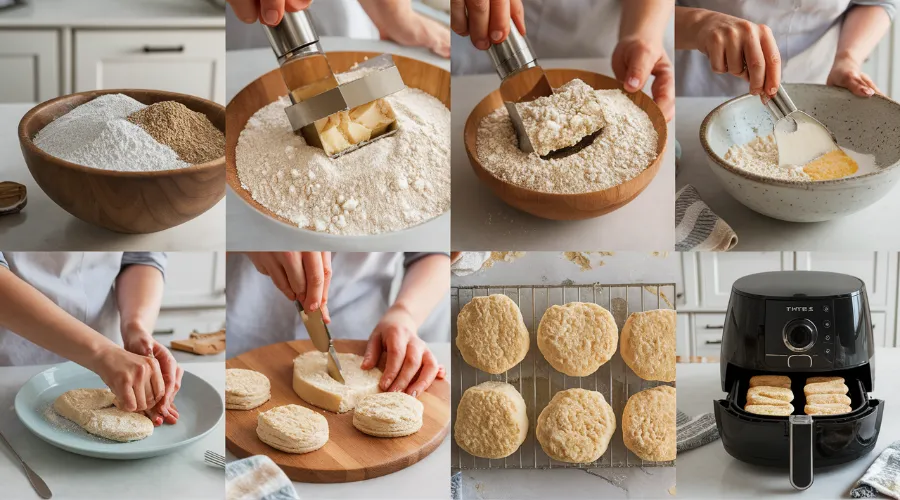
Ingredients Needed
To make gluten free biscuits at home, gather the following ingredients:
- 2 cups of gluten free all-purpose flour blend
- 1 tablespoon of baking powder
- 1/2 teaspoon of baking soda
- 1/2 teaspoon of salt
- 1/2 teaspoon of xanthan gum (if not included in the flour blend)
- 1/4 cup of cold butter or dairy-free margarine, cubed
- 3/4 cup of buttermilk or dairy-free milk
- 1 tablespoon of honey or sugar (optional, for a hint of sweetness)
These ingredients help you achieve a biscuit texture that’s tender and flaky, similar to traditional versions.
Step-by-Step Recipe
- Preheat the Oven: Begin by preheating your oven to 425°F (220°C). Line a baking sheet with parchment paper.
- Mix Dry Ingredients: In a large mixing bowl, combine the gluten free flour blend, baking powder, baking soda, salt, and xanthan gum (if using). Make sure everything is well mixed to ensure even baking.
- Cut in the Butter: Add the cold butter cubes to the flour mixture. Use a pastry cutter or your fingertips to blend the butter into the flour until the mixture resembles coarse crumbs. This step helps create a flaky texture in the biscuits.
- Add the Buttermilk: Pour in the buttermilk and honey (if using). Stir until the dough comes together. It should be slightly sticky but manageable. If the dough feels too dry, add a bit more buttermilk, one tablespoon at a time.
- Shape and Cut the Biscuits: Transfer the dough onto a lightly floured surface and gently pat it into a 1-inch-thick circle. Use a biscuit cutter or a round glass to cut out biscuits. Place them on the prepared baking sheet, about 1 inch apart.
- Bake the Biscuits: Bake the biscuits in the preheated oven for 12-15 minutes or until they are golden brown on top. Remove from the oven and let them cool slightly before serving.
For more baking inspiration, see our guide on Air Fryer Biscuits for a different take on preparing your biscuits.
Best Gluten Free Flours for Biscuits
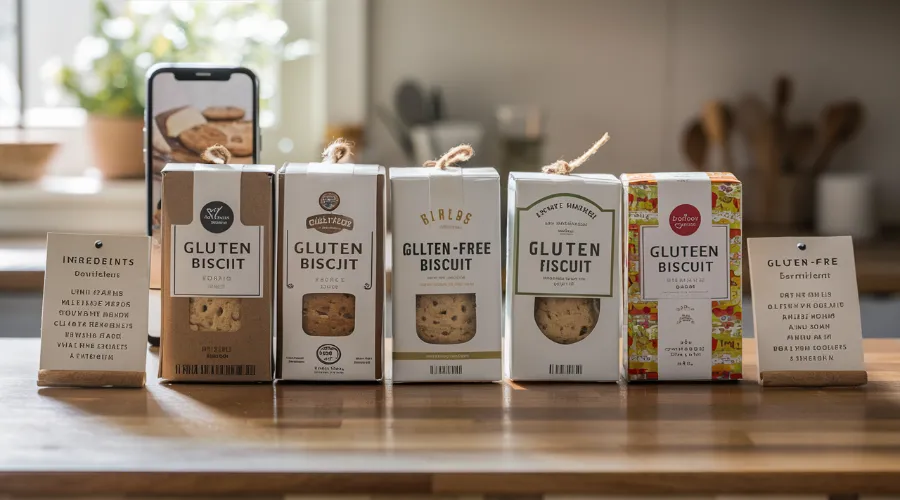
Choosing the right gluten free flour is essential to making delicious biscuits. Each type of flour offers a unique flavor and texture, so understanding your options is key:
Almond Flour
Almond flour is a favorite for gluten free biscuits due to its rich, nutty flavor and tender crumb. Made from finely ground almonds, it is naturally gluten free and low in carbohydrates. Almond flour biscuits tend to be moist and slightly dense, making them an excellent choice for those who enjoy a heartier biscuit. However, because almond flour lacks the binding properties of wheat flour, it’s best combined with other gluten free flours for optimal results.
Rice Flour
Rice flour is a staple in gluten free baking, known for its mild flavor and fine texture. It helps create light and airy biscuits, similar to those made with wheat flour. To achieve the best texture, rice flour is often blended with other gluten free flours. A mix of white and brown rice flours can provide a balanced flavor and consistency in your biscuits.
Coconut Flour
Coconut flour adds a subtle sweetness and a soft texture to biscuits. It is highly absorbent, so recipes using coconut flour require more liquid compared to those using other flours. To prevent biscuits made with coconut flour from becoming too dry or crumbly, it’s best used in combination with other gluten free flours. Its mild coconut flavor can complement both sweet and savory biscuit recipes.
Explore more options in our article on Is Gluten Free Pasta Low Carb? for additional tips on gluten free ingredients.
Tips for Baking the Perfect Gluten Free Biscuits
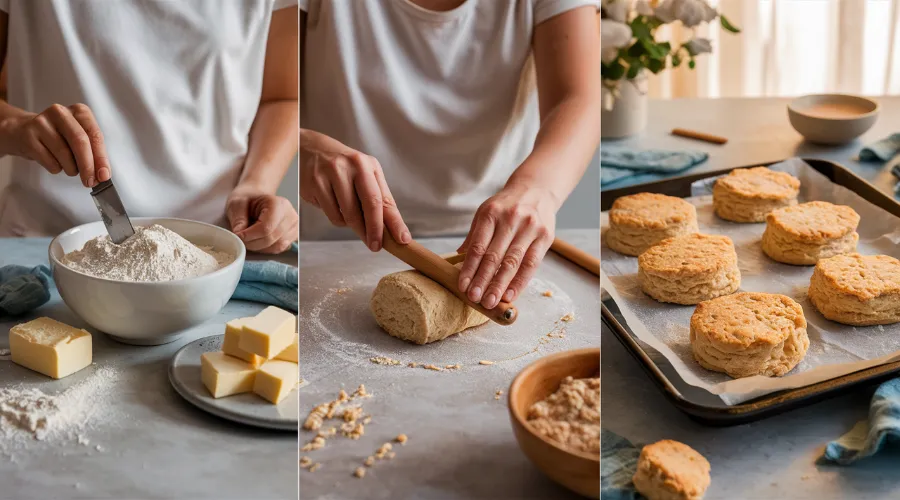
When it comes to baking gluten free biscuits, a few key techniques can make all the difference in achieving the perfect texture and flavor. Here are some essential tips to help you bake the best gluten free biscuits every time:
Avoid Overmixing the Dough
One common mistake when making gluten free biscuits is overmixing the dough. Unlike traditional wheat-based doughs, gluten free dough does not benefit from extensive mixing. In fact, overmixing can result in tough, dense biscuits. To avoid this, mix the ingredients just until they come together. The dough should be slightly sticky but easy to handle.
Proper Use of Leavening Agents
Leavening agents, such as baking powder and baking soda, play a crucial role in helping gluten free biscuits rise. To ensure a good rise, make sure your baking powder and soda are fresh. If your biscuits come out flat or dense, the leavening agents may have lost their potency. Additionally, using the right amount of these agents will help achieve a light, fluffy texture.
Managing Moisture Levels in Your Dough
Moisture is key when working with gluten free dough. Since gluten free flours tend to absorb more liquid than wheat flour, it’s important to monitor the dough’s consistency. If the dough feels too dry, add a small amount of buttermilk or milk, one tablespoon at a time, until the desired texture is reached. On the other hand, if the dough is too wet, add a bit more flour to balance it out. Keeping the moisture levels just right will help prevent the biscuits from becoming too dry or crumbly.
For more tips on gluten free baking, check out our article on Air Fryer Biscuits for a unique twist on cooking biscuits.
Common Mistakes to Avoid When Making Gluten Free Biscuits
While making gluten free biscuits is straightforward, a few common pitfalls can affect your final product. Here’s how to avoid these mistakes for perfect biscuits every time:
Choosing the Wrong Flour Mix
Not all gluten free flours are created equal. Using the wrong flour mix can result in biscuits that are either too dense or too crumbly. It’s essential to choose a gluten free flour blend specifically designed for baking. These blends often contain a mix of rice flour, potato starch, and tapioca flour, which help mimic the texture of wheat flour. If you’re experimenting with different flours, always consider the flavor and texture they will impart to your biscuits.
Not Adding Enough Fat
Fat, such as butter or margarine, is crucial for creating tender, flaky biscuits. Without enough fat, gluten free biscuits can turn out dry and hard. Ensure you’re adding the right amount of butter or an alternative fat. Cutting the fat into the flour properly also helps create the desired biscuit texture. Cold, cubed butter is ideal for this purpose, as it melts during baking, creating pockets of steam that contribute to a light and fluffy texture.
Baking at the Wrong Temperature
The baking temperature is another critical factor in achieving perfect gluten free biscuits. Baking at too low a temperature can cause biscuits to spread too much, resulting in flat, dense biscuits. Conversely, baking at too high a temperature can lead to a burnt exterior and undercooked center. Always preheat your oven to the recommended temperature and use an oven thermometer if necessary to ensure accuracy.
For more baking tips and tricks, see King Arthur Baking’s Guide to Gluten Free Baking.
Creative Variations for Gluten Free Biscuits
Gluten free biscuits don’t have to be plain. There are many creative ways to enhance the flavor and texture, making them even more enjoyable. Here are some delicious variations to try:
Cheddar and Chive Biscuits
Add a savory twist to your gluten free biscuits by incorporating sharp cheddar cheese and fresh chives. To make these biscuits, simply fold in shredded cheddar cheese and chopped chives into the dough before shaping and baking. The result is a flavorful, cheesy biscuit with a hint of oniony freshness—perfect for serving with soups or stews.
Sweet Cinnamon Sugar Biscuits
For those with a sweet tooth, try making gluten free cinnamon sugar biscuits. To prepare, mix a blend of cinnamon and sugar and sprinkle it over the biscuits before baking. You can also add a touch of cinnamon to the dough for an extra flavor boost. These sweet biscuits are delightful on their own or served with a drizzle of honey or maple syrup.
Vegan Gluten Free Biscuits
If you’re looking for a dairy-free and egg-free option, consider making vegan gluten free biscuits. Substitute the butter with a dairy-free margarine or coconut oil, and use a plant-based milk alternative such as almond or soy milk. For an egg replacement, a flaxseed or chia seed mixture works well. These vegan biscuits are just as delicious and perfect for those with dietary restrictions.
Explore more gluten free recipe ideas in our article on How to Make Velveeta Cheese Dip Without Rotel, which can pair wonderfully with your biscuits!
Serving Suggestions for Gluten Free Biscuits
Gluten free biscuits are incredibly versatile and can be enjoyed in many ways. Here are some ideas on how to serve them:
As a Side Dish
Gluten free biscuits make an excellent side dish for a variety of meals. They pair particularly well with soups and stews, adding a warm, comforting element to the meal. Try serving them alongside a hearty vegetable soup or a creamy chicken stew for a delicious combination.
As a Breakfast Option
Biscuits are a classic breakfast staple, and gluten free versions are no exception. Serve them warm with eggs, bacon, or sausage for a satisfying breakfast. You can also enjoy them with a spread of butter and jam or honey for a simple yet delightful morning treat.
As a Snack
For a quick and easy snack, enjoy gluten free biscuits on their own or with a favorite topping. They are perfect for an afternoon break with a cup of tea or coffee. Try them with a slice of cheese or a dollop of homemade jam for a tasty pick-me-up.
Storing and Reheating
Proper storage and reheating techniques are key to maintaining the freshness and texture of your biscuits. Here’s how to keep them at their best:
Storing Leftovers
To store leftover biscuits, allow them to cool completely before placing them in an airtight container. Keep them at room temperature for up to two days. For longer storage, refrigerate them for up to a week. This method helps retain their moisture and prevents them from drying out.
Reheating Tips
Reheating biscuits properly is crucial for maintaining their texture. To reheat, place the biscuits in a preheated oven at 300°F (150°C) for about 5 minutes. This will help restore their crispy exterior while keeping the inside soft and fluffy. You can also reheat them in a microwave, but keep in mind that this may result in a softer texture.
Freezing Biscuits After Baking
For longer storage, consider freezing your biscuits. Once they have cooled completely, wrap each biscuit individually in plastic wrap or aluminum foil, then place them in a freezer-safe bag or container. To reheat, remove them from the freezer and place them directly in a preheated oven at 350°F (175°C) for 10-15 minutes or until heated through.
FAQs
Here are some frequently asked questions to help you bake with confidence:
- How do you make gluten free biscuits fluffy?
Achieving fluffy biscuits requires the right balance of ingredients and careful handling of the dough. Make sure not to overmix and use fresh leavening agents. - Can you freeze gluten free biscuit dough?
Yes, you can freeze the dough before baking. Simply shape the biscuits and place them on a baking sheet lined with parchment paper. Freeze until solid, then transfer to a freezer bag. Bake from frozen, adding a few extra minutes to the baking time. - What’s the best way to keep gluten free biscuits from being dry?
Ensuring the right moisture level in the dough and using enough fat in the recipe can help keep biscuits moist. Also, avoid overbaking them, as this can lead to dryness. - How do you prevent gluten free biscuits from sticking to the baking tray?
To prevent gluten free biscuits from sticking to the baking tray, it’s best to line the tray with parchment paper or use a silicone baking mat. A light coating of non-stick cooking spray can also be helpful. Ensuring that the biscuits have enough fat content will also naturally prevent sticking, giving you perfectly baked, easy-to-remove biscuits every time.
Conclusion
In conclusion, gluten free biscuits are a fantastic choice for anyone looking to enjoy a delicious, comforting treat without the gluten. With a few simple adjustments and the right ingredients, you can create biscuits that are every bit as flavorful and satisfying as their traditional counterparts. Whether you’re enjoying them with a savory meal, as a sweet snack, or just on their own, these biscuits are versatile and easy to make. So, why not give gluten free biscuits a try? With the guidance from this article, you’re well-equipped to start baking and enjoy the wonderful world of gluten free baking. Happy baking!
